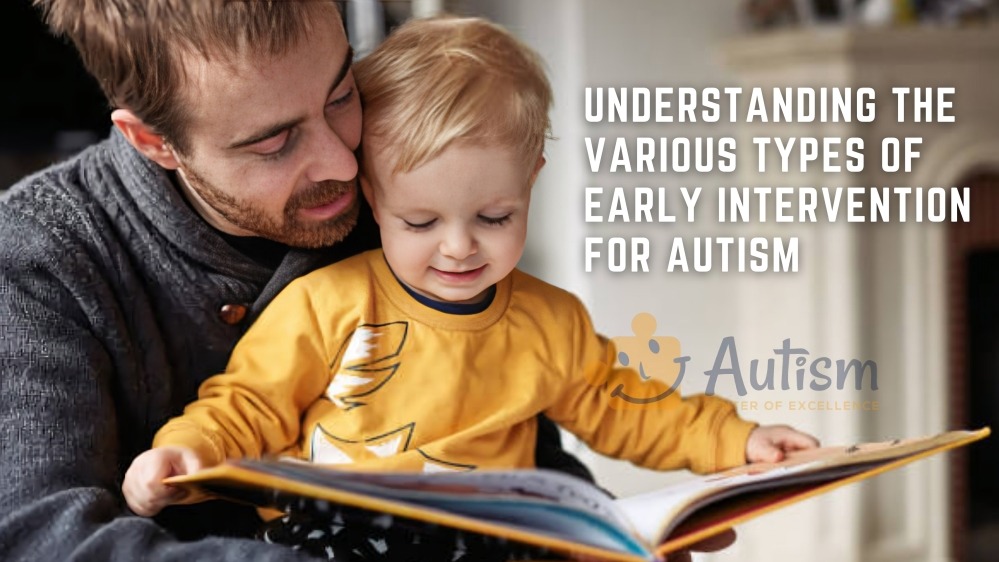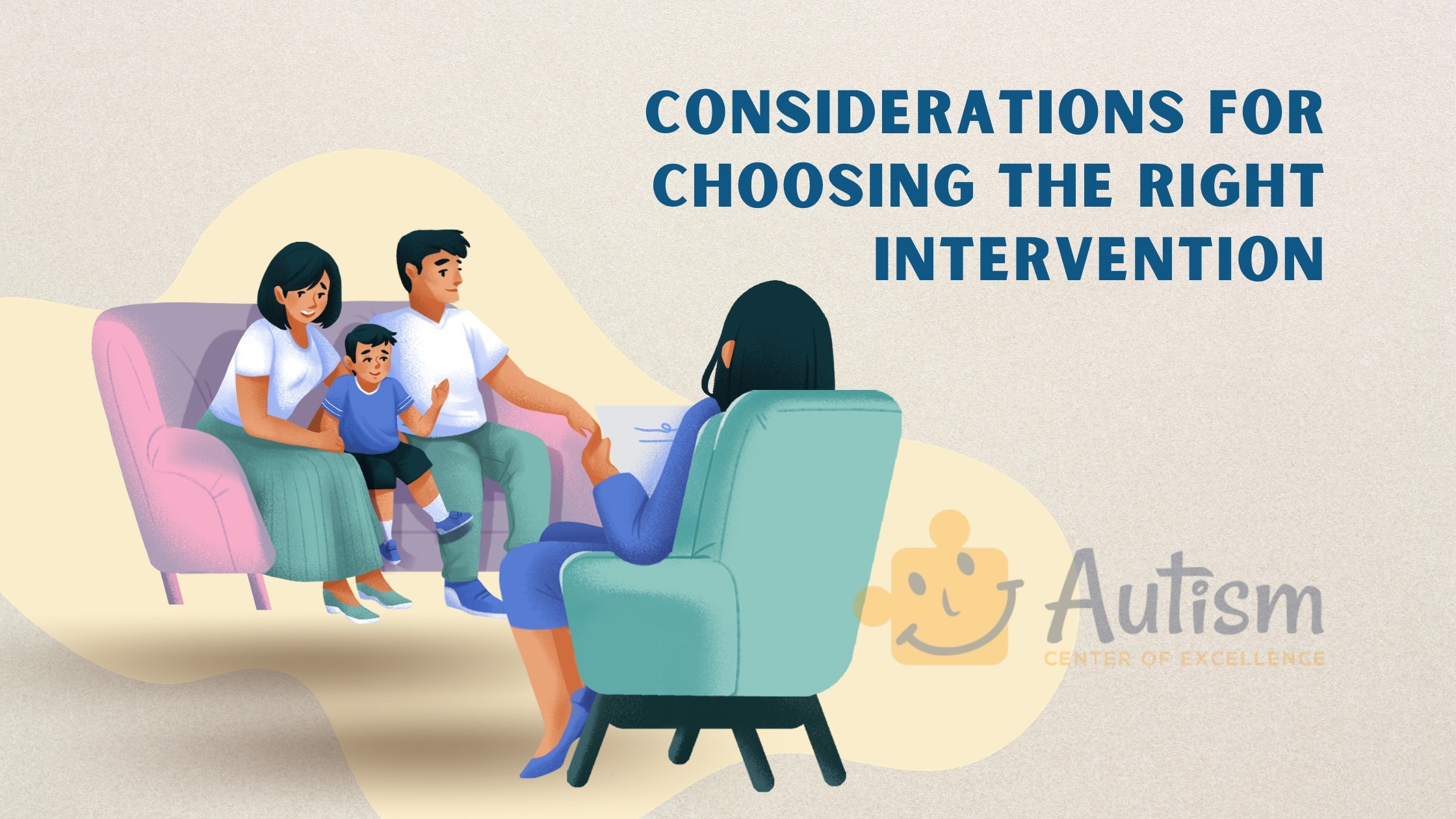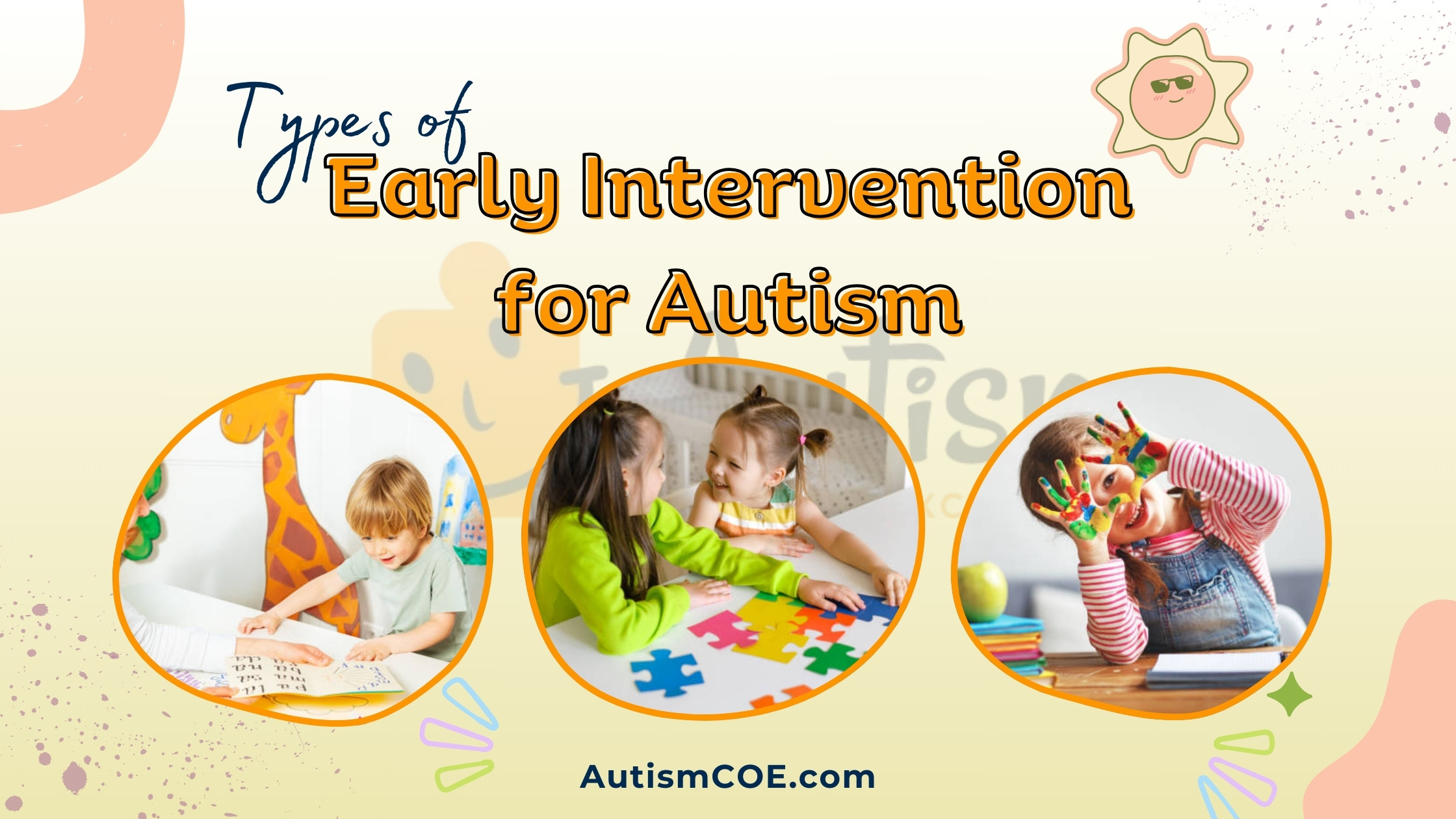Autism Spectrum Disorder (ASD) is a complex developmental condition that presents unique challenges for affected children and their families. Early Intervention has been shown to significantly improve the outcomes for these children, making it a vital part of ASD management. From understanding individual needs to considering evidence-based practices and the importance of family involvement, this blog aims to equip you with the knowledge and strategies necessary to make informed decisions for the best possible care and support for children with ASD.
What is Early Intervention for Autism?
Early intervention for autism refers to a series of therapeutic and Educational Services and strategies that are designed to support children with Autism Spectrum Disorder (ASD) from birth to three years old. The main goal of early intervention is to enhance the developmental trajectory of the child, capitalize on their capacity to learn during the crucial early years, and minimize the potential challenges associated with ASD.
These services, provided by an early intervention specialist, include various Autism Therapy approaches and can take place in a variety of settings, such as specialized centers, schools, or even at home. By identifying and addressing developmental issues at their earliest stages, early intervention programs have been found to be highly effective interventions for ASD.
Who is Eligible for Early Intervention?
Early intervention strategies are typically designed for children from birth to three years old who have been identified as having, or being at risk of, developmental delays or disabilities, including Autism Spectrum Disorder (ASD). Eligibility for these programs can vary based on location and specific program requirements.
Generally, a diagnosis of ASD or symptoms indicative of ASD, such as difficulties with social interaction, communication challenges, or repetitive behaviors, would qualify a child for Early Intervention Services. It’s important to consult with healthcare professionals, such as pediatricians, psychologists, or an early intervention specialist, to accurately assess a child’s developmental status and determine their eligibility for these beneficial programs.

Types of Early Intervention for Autism
It is important that we have an understanding of the different types of early intervention for autism so that we can render appropriate help to children with Autism Spectrum Disorder (ASD). These interventions strive to cater to the multi-faceted difficulties associated with ASD. This in-depth guide will focus on the types of early intervention services, outlining for the reader the different strategies and how they complement to increase the Developmental Growth of Children with Autism.
A. Behavioral Interventions:
Behavioral techniques are the most practiced early intervention methods for autism. They concentrate on inculcating in children competencies in managing behavior, improving social skills, and developing communication.
Applied Behavior Analysis (ABA):
ABA is a treatment that is based on the behavior analysis science which utilizes Reinforcement Strategies to enhance positive behaviors and decrease those that may cause harm or interfere with learning.
Pivotal Response Treatment (PRT):
PRT represents a type of behavior therapy for autism, paying particular attention to improving autonomy, self-control, and social initiative, which are pivotal skills that affect a great number of behaviors.
Early Start Denver Model (ESDM):
ESDM is an early and intensive sensory-motor behavior intervention strategy aimed at young children with autism which incorporates the applied behavior analysis, and developmental and relationship-based approaches.
B. Developmental Interventions:
Developmental interventions, which concentrate on enabling development and learning through developmentally appropriate play-based activities, are therefore targeted to the specific needs of the child.These may include:
Floortime/DIR (Developmental, Individual differences, Relationship-based) Model:
The main goal of Floortime is to foster emotional and relational development (feelings, relationship with caregivers). It also highlights ways children handle the realities of seeing, hearing, and smelling.
Relationship Development Intervention (RDI):
RDI is a family-oriented behavior therapy of the autism-specific symptoms. It stresses soctal and Emotional Development, and those areas on cognitive flexibility, problem-solving ability and social relationships.
C. Communication and Language Interventions:
These interventions concentrate on the development and improvement of communication skills in children with autism.Some examples include:
Picture Exchange Communication System (PECS):
PECS is a very special communication system that is referred to as alternative/augmentative communication and was developed by Andy Bondy, Ph.D. and Lori Frost, MS, CCC-SLP in 1985.
Augmentative and Alternative Communication (AAC):
Among the forms of AAC, there are all means of communication (other than a spoken word) which are used to communicate feelings, desires, preferences, and ideas. It is true that we use AAC when we make different facial expressions and gestures; use symbols and pictures or write.
Speech Therapy:
The goal of Speech Therapy is to enhance communication skills – that is, to develop speech flow, language comprehension, and social communication. Additionally, it can solve problems associated with feeding and swallowing.
D. Sensory-Based Interventions:
The interventions’ objectives are based on the identification and mitigation of the sensory processing issues in the kids with autism.Such as:
Sensory Integration Therapy:
This therapy involving sensory integration is designed at making the individual to cope with the sensory stimuli like sights, sounds and smells. Sensory integration therapy could assist the person that suffer from autism to cope with their surroundings.
Occupational Therapy (OT):
Occupational Therapy is a profession that focuses on engaging individuals with different requirements involving cognitive, physical, sensory and motor skills to empower them and boost their self-confidence.
E. Educational Interventions:
These interventions target on supplying individualized help and education for children with autism.Some of them:
Social Skills Training:
This skill is adapted to help the person learn the verbal and nonverbal behaviors of interacting with others. It is also very useful for those with autism to learn how to communicate in the right manner and get social skills.
Structured Teaching (TEACCH):
The Treatment and Education of Autistic and Related Communication-Handicapped Children (TEACCH), for short, is a methodology based on developmental principles aimed at independent functioning in people with autism through training the visual information capacity. TEACCH is a therapeutic approach which is based on the concept that autistic people are visual learners; therefore, teachers should adapt their teaching methods and interventions as well according to this premise.
Individualized Education Programs (IEPs):
IEPs are a crucial component of the educational system for disabled children such as those with autism. These are support plans provided at no cost in Common or Special Education Needs and are customized for the child with specific needs.
Join Our Weekly Newsletters!
Subscribe now to stay updated with our latest email updates.

Considerations for Choosing the Right Intervention
Making the appropriate choice of intervention for a child with ASD is of paramount importance as it greatly influences such a child’s rate of development. undefined
🌟 Child’s Unique Needs: All the kids with ASD are characterized by a variety of strengths and weaknesses. Individual differences should guide the type of intervention chosen, and if any problem areas exist, they should be addressed while capitalizing on their strengths.
🌟 Evidence-Based Practices: Select interventions that have been scientifically proven and are known to be effective considering available evidence.
🌟 Family Involvement: Interventions which include the family are regularly useful because they present chances for the permanent support and practice at home.
🌟 Accessibility and Affordability: For instance, take the logistics side into account like the cost of the approach, the presence of trained persons in the area, and the time needed.
🌟Child’s Response to the Intervention: Check the child’s progress and their reaction to the intervention. If the child does not improve or deny the intervention, it may be required to search for other options.
Frequently Asked Questions & Answer
What Age is Early Intervention for Autism?
Intervention for autism, which is normally stated once at least a diagnosis is made, first happens by the age of 2 -2.5 years of age. In addition, evidence of autism may show up much earlier, and preparations can be made through strategies which are based on the early signs.
Why is Early Intervention for Autism Important?
The early intervention is crucial because it seizes very malleable brains in the early years. It plays a critical role in the development of crucial social, communication, and behavioral skills for children with autism. With time, the strengths of these subjects children can be improved and can be enabled to be more interactive, surefooted, and independent.
What are the 3 Forms of Early Intervention for Autism?
The three forms of early intervention for autism are:The three forms of early intervention for autism are:
Behavioral and Communication Approaches: That refers to technicalities of ABA, ESDM, and PECS.
Dietary Approaches: Others are related to dietary changes, or they benefit patients by providing them with vitamin and mineral supplements, taking the view that some symptoms can be eased in this way.
Medication: Notwithstanding that there exist no single drug that can be used to eradicate autism, there are medications which could help manage certain specific symptoms such as, high energy levels, inability to focus, depression, and seizures.
How Effective is Early Intervention?
It has been reported a lot that an early intervention sheds light on the great support for cognitive as well as the social development of children with autism spectrum disorder. It, however, doesn’t remove autism as a condition but serves mainly as a buffer from its often debilitating effects thereby making it easier for the patient to live independently. The effectiveness level is different, from individual to individual, with continuous adjustment of intervention strategies being inevitable.
Conclusion
Early intervention of Autism Spectrum Disorder is of great importance because it can guarantee the best of outcomes for the child’s development and enhance the quality of his/her life in case of ASD diagnosis. Parents, family caregivers and healthcare professionals should be well aware of the Early Signs of ASD and must give appropriate intervention as early as possible. In the right environment, every child with ASD can achieve immense proficiency, opening up their minds and having the lives they deserve.
Autism Center of Excellence provides ABA Therapy, Early Intervention, School Readiness, Speech, and Occupational Therapy for kids aged 2-14, both in-home and center-based. Additional services include Specialized Parent Training and both Center-Based and In-Home ABA Therapy.
Please Note: The content of this blog is for informational purposes only and should not be considered a substitute for professional medical advice, diagnosis, or treatment. Consult a qualified healthcare professional for personalized guidance tailored to your specific situation.

Bhavika Bhasin
Bhavika Bhasin is the Research and Marketing officer at AutismCOE. She works with children and adults with ASD. Her clinical research includes evaluating various available autism screening and diagnosis methods and their efficacy. She is currently developing a novel screening exam that is indicated to be more accurate than the existing available exams. She is also writes articles papers for various publications.


